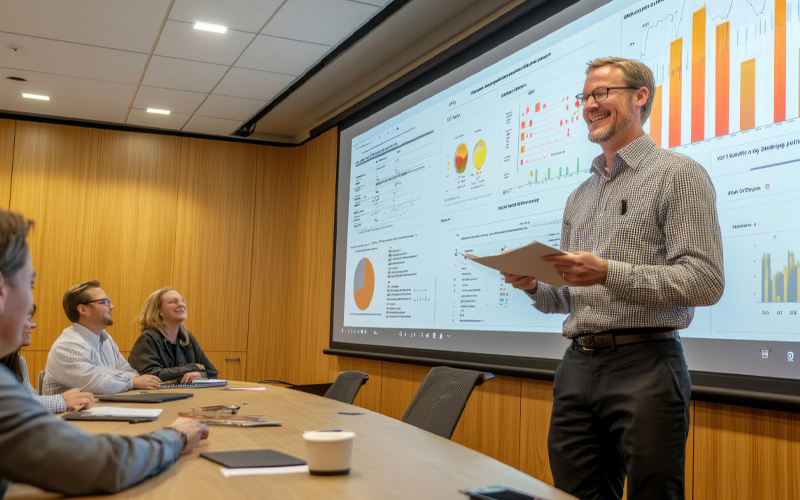With companies pushing the envelope to become carbon-neutral in the next 10-30 years, there are serious plans to tackle the repercussions of climate change, and its impact on business continuity. Spatial science is an emerging data science that provides an understanding and the ability to analyse real-world phenomena and geographic big data. Geospatial platform with Artificial Intelligence combines spatial science, ML, data mining, statistical models, and simulations to address challenges across several disciplines. For instance, Location AI can be used for real-time asset monitoring, to predict economic conditions by location, or to identify and provide information on developed and undeveloped roof spaces to create panel platforms. In this article, we will see how GIS can be applied to detect potential solar sites.
In the past few years, solar photovoltaic (PV) installations have increased manifold due to sustainability initiatives and costing advantages. However, the placement of PV installations should be in such a way that it optimises solar panel performance. Accurately detecting potential solar sites has both economic and ecological benefits. By identifying appropriate sites for solar development, companies can screen environmentally sensitive lands, plan optimal transmission lines, expedite access to land, and generate a blueprint for solar energy development. Solar developers & energy consumers can also utilize deep learning models with image annotation & roof measurement framework to detect, classify, and tag objects for solar panels on roof spaces.
Considerations for using Location AI in solar energy planning
Before planning a solar farm, it is wise to predict the energy demand of the area or the industry. Geographic Information Systems (GIS) techniques can map solar resources based on aerial image and use them with energy demand modelling based on parameters such socio-economic factors, population density and energy consumption to generate accurate forecasts.
The availability of solar radiation is an obvious consideration for detecting potential solar sites. Solar radiation estimation includes aggregating data from different systems and methodologies such as weather station surveillance, multivariate statistical models based on light detection and sunshine ratio, Light Detection and Ranging (LiDAR) and Digital Elevation Model (DEM) for urban areas or individual models, and other optical imagery. Accurate estimates from multi-disciplinary data sources and systems can be obtained by leveraging geospatial platforms.
Panel position is a consideration for both micro and macro solar installations. AI-based geospatial studies will help in analysing a rooftop’s potential for solar installation and identifying any natural or manmade obstruction to sunlight. For ground-mounted panels, considerations could include land availability, sensitive environmental regulations, economic concerns, energy generation potential, dust accumulation on panels, and the accessibility to transmission lines. GIS and location data can generate 3D models of a terrain. With Geospatial intelligence and AI based spatial model changes can be predicted, which in turn aids in the planning of construction and costs. Typically, solar panel installation is an expensive affair, so it is wise to get accurate estimates of costing and future maintenance.
Solar panels require regular maintenance for optimum functioning. Dust, debris, and weather events such as storms can impact solar panel performance. In such situations, using location-based GIS in conjunction with Unmanned Aerial Vehicles (UAVs) with sensors can help detect exact issues, or even predict their occurrence in the near future, allowing for proactive maintenance.
Besides interpreting satellite and aerial imagery, Deep Learning algorithms that use Convolutional Neural Networks (CNNs) or converts can be used to map existing solar installations on rooftops to generate a geospatial registry at a building level. They can also generate accurate energy statistics at a regional level that can be used by policy makers during energy planning.
The enormous volume of data that needs to be collected, captured, and refined requires the use of cloud storage and computing, so that the model can be retrained, optimised, and can be scaled up for an entire region or country.
Refining the model
Arriving at accurate predictions requires model refinement. As with all deep learning models, the training data set is of paramount importance when it comes to AI in GIS. High resolution Aerial imagery needs to be corrected or reconstructed and the training data images should have the required data points. All the data sets need to be cohesive. For existing installations, both location and shape accuracy are required, and thus the imagery needs to be corrected accordingly. For instance, sloping windows or wet patches on roofs may appear as solar panels, and need to be corrected.
Building footprint data is an important consideration and can be used to further refine the training data set. Employing post-processing techniques helps to refine the data set further, and metrics need to be defined to determine model accuracy. If the region is very large, such as a country, custom post-processing techniques may be required to improve the quality of the data.
As the world turns towards renewable energy sources and accelerates to net-zero, solar energy has become an attractive alternative. Corporations and countries will require a geospatial strategy* and Location based AI stands to become an important technique to achieve sustainability goals. Such location-based AI platforms offers tremendous potential for solar energy planning and maintenance and will become an essential part of decision making for solar developers.
about Infosys BPM GIS services
In order to address the mapping needs and real-time monitoring in almost all business functions, geospatial location platform is the key to manage public utility assets.
Our GIS team is made up of experienced domain experts with spatial technological background to manage customer asset value chain, including mapping activities, data creation and migration, application development, enterprise GIS upgrade/migration, modelling, and analytics. We have a proven GIS Centre of Excellence, delivering professional services to maintain large GIS systems and data sets, helping our clients reduce their cost of operations by 40% and improve data quality with 99% accuracy in asset operations.
*For organizations on the digital transformation journey, agility is key in responding to a rapidly changing technology and business landscape. Now more than ever, it is crucial to deliver and exceed on organizational expectations with a robust digital mindset backed by innovation. Enabling businesses to sense, learn, respond, and evolve like a living organism, will be imperative for business excellence going forward. A comprehensive, yet modular suite of services is doing exactly that. Equipping organizations with intuitive decision-making automatically at scale, actionable insights based on real-time solutions, anytime/anywhere experience, and in-depth data visibility across functions leading to hyper-productivity, Live Enterprise is building connected organizations that are innovating collaboratively for the future.







